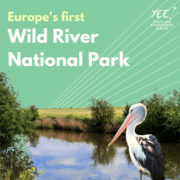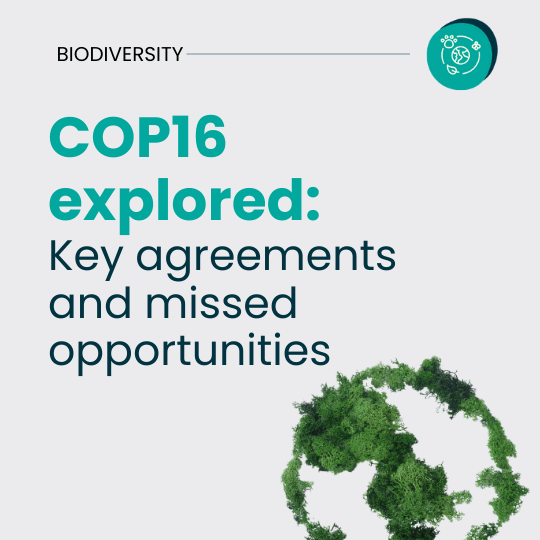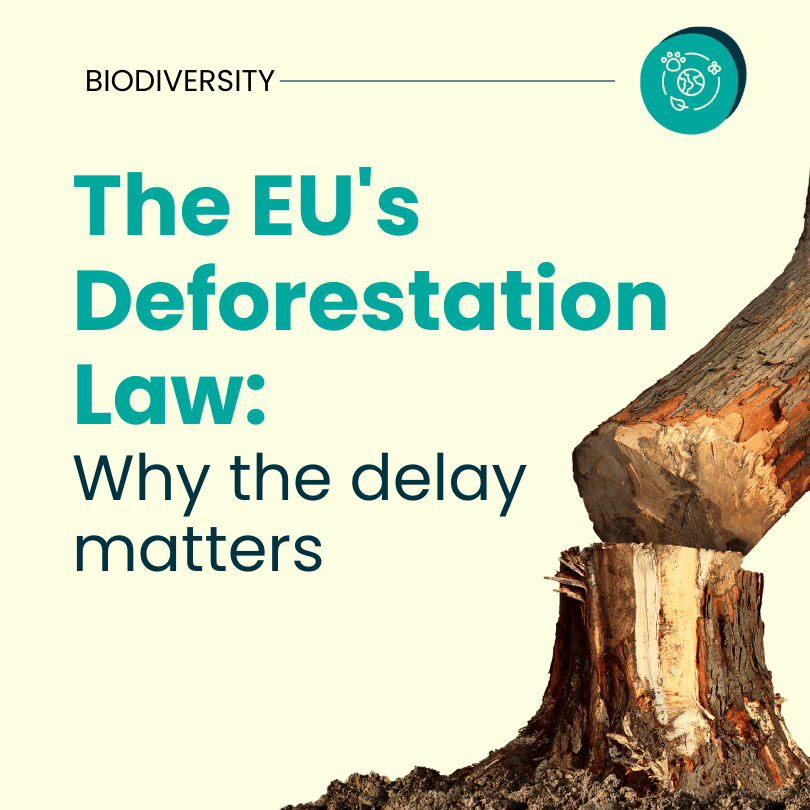
National Restoration Plans (NRPs) are a cornerstone of the Nature Restoration Law (NRL), outlining how Member States (MS) will implement the regulation

















In the Pindus mountains of Greece, close to the village of Vovousa, you can find the source of the last wild river of Europe – the Aoös/Vjosa river. Flowing northwest in natural meanders, it is joined by the river Voidomatis and eventually enters Albania, where it is again joined by the river Sarantaporos. Continuing its way northwest, passing the cities Përmet, Këlcyre and Tepelenë the river is joined by its Albanian tributaries Drin and Shushicë and finally flows into the Adriatic Sea close to the well-known city Vlorë.
As a result of major undisturbed natural processes, a unique landscape and ecosystem developed over thousands of years along the course of the river, based on different flow velocities and river depths ranging from unvegetated gravel bars to floodplain forests. Local people have found a way to live in harmony with this precious ecosystem, making use of and depending on its natural resources without posing a threat to its further existence. This also allows the continued existence of a vast variety of plant as well as animal species, native to the unique and rare habitats of the river. Flagship species that have been picked up by international media representing the unique flora and fauna are the Egyptian vulture, European eel and the Dalmatian pelican, just to name a few.
On march 15, 2023, the precious landscape around the last free-flowing wild river of Europe was announced as the Vjosa Wild River National Park. The protection status corresponds to IUCN’s Protected Area Management Category II, the main objective being the protection of its natural biodiversity and the underlying ecological structures and undisturbed natural processes. The protection and therefore continued existence of the ecosystem also aim at the promotion of education and recreational activities.
The process and fight for the protection of the Vjosa to be declared a protected area or National park started in the year 2014 when the german magazine “Der Spiegel” published an article on the situation of rivers in the Balkan region and their threatened status due to several planned hydropower plants. After the first biodiversity assessment was carried out, underlining the unique nature of the river ecosystem, the matter attracted the attention of the European Parliament which demanded the halt for all construction plans and the control of Albania’s hydropower development. Several international protests followed, a lawsuit was filed in December 2016 to stop the development of a new hydropower project which was decided in favour of the Albanian NGO EcoAlbania. In spite of this development, the Albanian government decided to move ahead with the construction of yet another dam, triggering further protests. In 2018, data gathered by international scientists was published in the form of a study. The campaign picked up speed with yet another study by the Austrian University of Natural Resources and Life Sciences, concluding the Vjosa river to be unsuitable for energy production due to its high sediment transport. The international attention was followed by a petition, signed by 776 scientists from 46 countries in the beginning of 2020. Within the same year, the plans for the Kalicaç Dam were brought to a halt by the Albanian Environmental Ministry.
The first official proposal for the creation of a Vjosa National Park was put forward in early 2021 by 20 Albanian Environmental organisations, which was then backed up by a study conducted by the IUCN. In parallel to support by the community of scientists, public attention was further achieved by the release of an explanatory video by Patagonia as well as a significant action on World Water Day 2021 in several European cities.Throughout the year 2021, further gathering of scientific data on the Vjosa tributaries, publicity-boosting actions and the launch of a global petition were the last steps of the campaign, before it was declared a Nature Park in January 2022. However, with the status of a Nature Park not guaranteeing effective protection of the Vjosa and its tributaries and sufficient eco-touristic opportunities for the local people, the Vjosa river was finally declared a Wild River National Park ten months later, in March 2023.
The rare and unique geological features of the river give rise to an equally unique diversity in plant and animal species, many of which are globally threatened and some of which are protected. As part of the mediterranean basin, the balkan peninsula is one of the 25 most important world hotspot areas of biodiversity.
In a baseline survey Scientists from all over Europe clearly presented the impact the construction of hydropower plants would have on rare habitats and therefore species, threatening the continued existence of such a unique ecosystem. The absence of fish barriers in the Vjosa, until today, allows for the existence of numerous endangered and endemic fish species that are heavily dependent on the free-flowing nature of rivers, such as the migratory European eel, which is classified as critically endangered on the IUCN Red list. Based on the variety of different habitats, a number of 18 species were found in the baseline survey, once again underlining the importance of river-connectivity and varying speed of water flow.
Within the group of Macroinvertebrates, which includes different organism groups like molluscs, worms, crustaceans, and insects, a number of 227 aquatic invertebrate taxa were found along the course of the Vjosa, some of which are still to be included in scientific research. While some of the species used to be present throughout Europe, other species like the stonefly Isoperla vjosae have, to date, been found exclusively in the Vjosa.
However, the Vjosa valley is crucial not only for the survival of aquatic species but also provides habitat for birds, of which 257 species have been recorded in the basin, many of which are listed on the Red List of Albanian Flora and Fauna and in the Appendix of the Bern Convention, and some in the Annex of the Convention on Migratory Species. Species like the Egyptian vulture (Neophron percnopterus) and the Dalmatian pelican (Pelecanus crispus) serve as flagship species, once again demonstrating the sensitive and vulnerable nature of this natural ecosystem which, until today, provides habitat for species that would otherwise be on the brink of extinction.
Finding a floodplain today that remains untouched by significant human influence has become increasingly challenging. Floodplains are important ecologically, covering 7% of the European continent and accounting for up to 30% of terrestrial Natura 2000 site area in Europe. Alarming studies reveal that 70-80% of floodplain have suffered environmental degradation due to human activities.
Amid this concerning trend, the Vjosa River stands out as a remarkable exception. Baseline surveys have identified the Vjosa River as a reference site due to its exceptional ‘near natural status’, boasting high biodiversity and hosting endangered fauna and flora. Moreover the habitats found along the river possess an international value, making it a unique and valuable ecological system.
What sets the Vjosa River apart is its minimal human influence, a rarity in today’s world. The majority of its tributaries flow freely into the river, with only two of them subject to damming. This makes the Vjosa an invaluable case study for understanding and researching the ecological and morphological conditions of a floodplain. A critical aspect of utilising reference sites like the Vjosa is their utility in assessing human impacts on floodplains such as hydropower projects which pose a significant threat to river ecosystems and biodiversity. Therefore, the Vjosa serves as blueprint for understanding what a functioning river should look like and highlights the need to preserve and protect this ecosystem for future generations.

National Restoration Plans (NRPs) are a cornerstone of the Nature Restoration Law (NRL), outlining how Member States (MS) will implement the regulation

As European youth, we hold all relevant decision-makers accountable for this grave backsliding in European conservation law. We call for the return

The conclusion of the 16th meeting of the Conference of Parties to the Convention on Biological Diversity (CBD COP16) marks a pivotal

Despite the law’s importance in combating deforestation, the European Union recently announced a 12-month delay.
 YEE aims to unite environmental youth non-profit organisations in Europe in order to enhance international cooperation, increase knowledge about the climate crisis, raise awareness of environmental problems and to strengthen participation of youth in environmental decision-making.
YEE aims to unite environmental youth non-profit organisations in Europe in order to enhance international cooperation, increase knowledge about the climate crisis, raise awareness of environmental problems and to strengthen participation of youth in environmental decision-making.
Vinohradská 2165/48
120 00 Praha 2 – Vinohrady
Czech Republic
E-mail: yee@yeenet.eu


Financially supported by the European Youth Foundation of the Council of Europe. The views expressed do not necessarily reflect the official position of the Council of Europe

 We are looking for Liaison Officers | Volunteering
We are looking for Liaison Officers | Volunteering 
